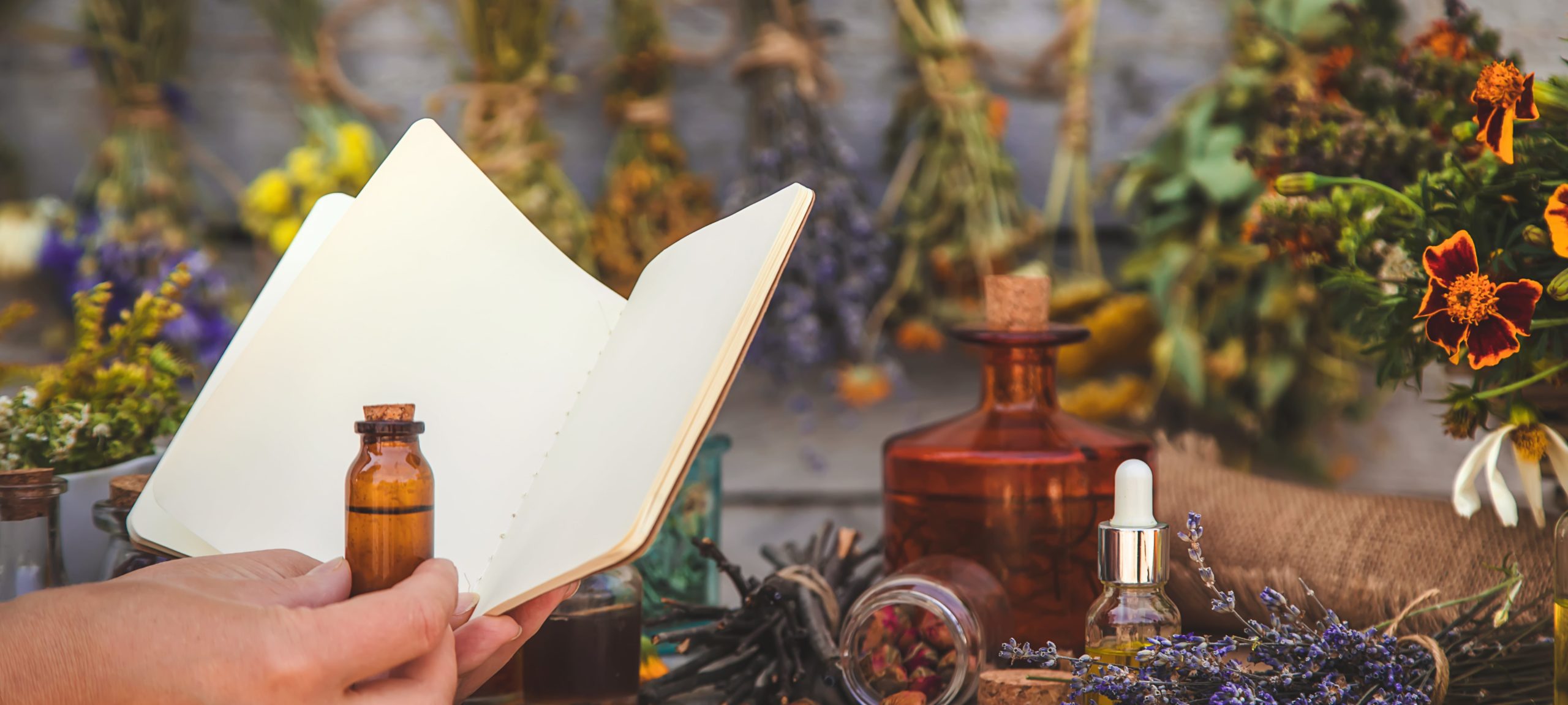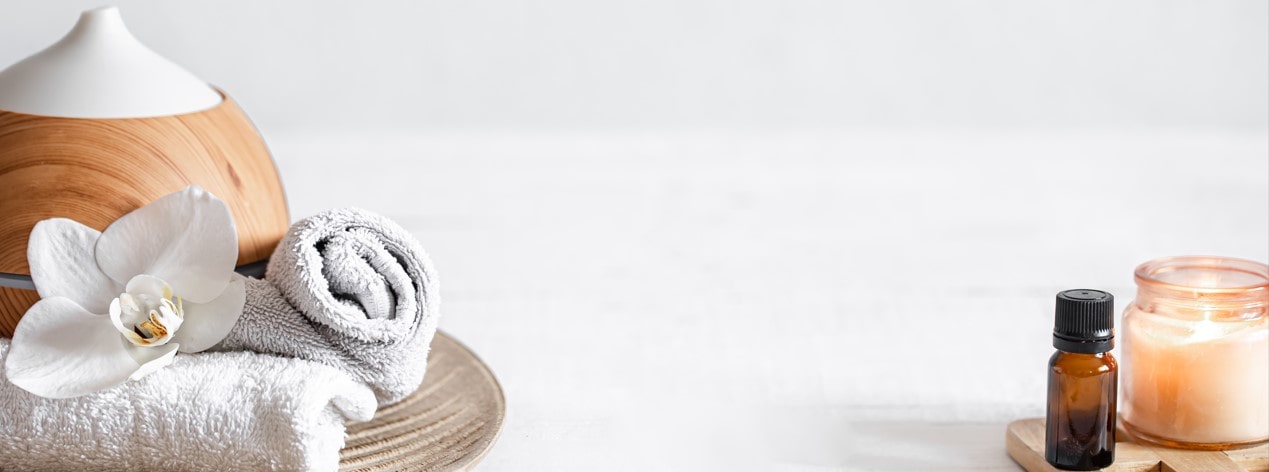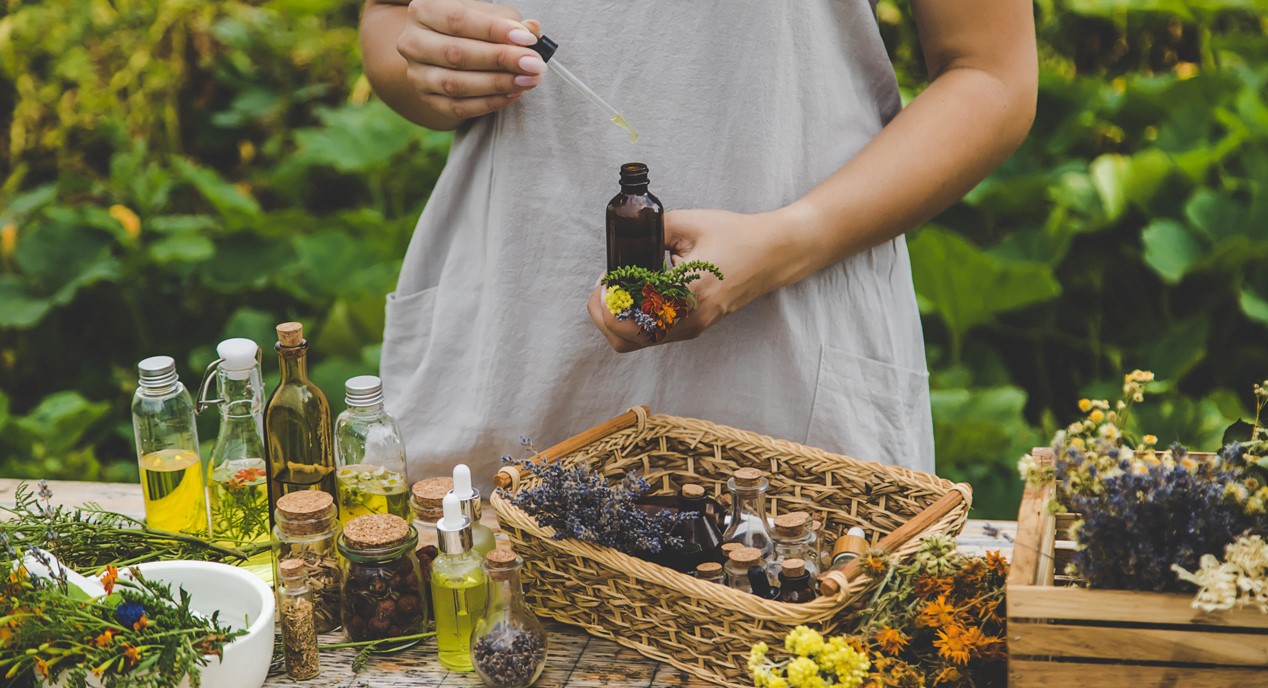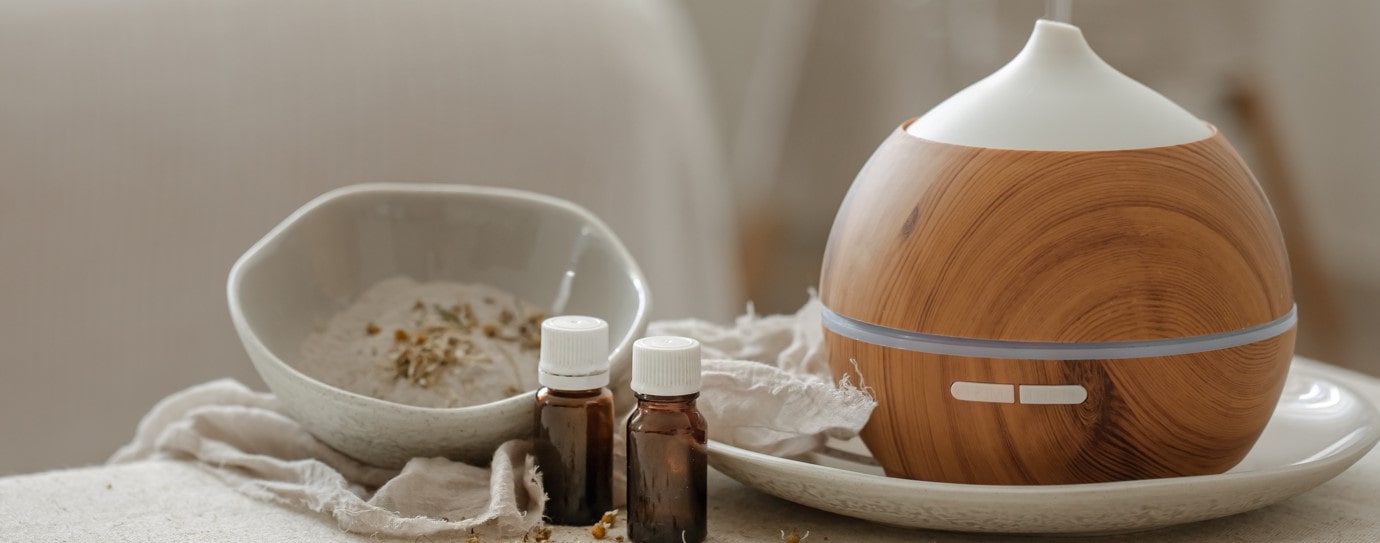Aromatherapy has been used for thousands of years to promote physical and emotional wellbeing. Essential oils, which are the concentrated extracts of plants, are the foundation of aromatherapy. These oils are believed to contain the natural essence, or “life force,” of the plants they are derived from, and can be used to enhance mood, reduce stress, and support overall health. In recent years, essential oils have become increasingly popular as more people seek natural alternatives to traditional medicines and treatments. By understanding the history and benefits of aromatherapy and essential oils, anyone can begin to explore the many ways these powerful plant extracts can enhance their mind, body, and spirit.
I. The History of Aromatherapy and Essential Oils

A. Origins of Aromatherapy
The use of aromatic plants for medicinal purposes can be traced back to ancient civilizations such as Egypt, Greece, and Rome. The Egyptians, for instance, used fragrant plants in religious ceremonies and for embalming the dead. The Greeks and Romans also valued the therapeutic properties of fragrant plants, and used them to treat a variety of ailments. In ancient times, aromatic oils were considered to be precious commodities, and were often traded as currency.
B. Development of Modern Aromatherapy
The modern practice of aromatherapy can be traced back to the early 20th century. In 1910, a French chemist named Rene-Maurice Gattefosse accidentally discovered the healing properties of lavender oil when he used it to treat a burn on his hand. This led him to explore the therapeutic properties of other essential oils, and he coined the term “aromatherapy” to describe the practice of using essential oils for therapeutic purposes.
Gattefosse’s work was further developed by two other French doctors, Jean Valnet and Robert Tisserand, who expanded the use of aromatherapy as an alternative medicine. In the 1970s, aromatherapy began to gain popularity in Europe and North America, and today it is widely practiced around the world.
C. Essential Oils in Modern Times
Today, essential oils are used in a variety of settings, including spas, wellness centers, and homes. They are also used in cosmetics, personal care products, and cleaning products. The use of essential oils has also been supported by scientific research, which has confirmed their therapeutic benefits. The process of extracting essential oils from plants has become more advanced, and there is a growing focus on sustainable sourcing and fair trade practices.
D. Benefits of Aromatherapy and Essential Oils
The benefits of aromatherapy and essential oils are numerous. They can be used to promote relaxation and stress relief, improve mood and mental well-being, and provide physical benefits such as pain relief and improved sleep. They can also be used to treat a variety of health conditions, such as skin conditions, respiratory problems, and digestive issues.
E. Future of Aromatherapy and Essential Oils
As the popularity of aromatherapy and essential oils continues to grow, there are several emerging trends to watch. Personalized aromatherapy is becoming more popular, with the use of individualized blends of essential oils tailored to the needs of each individual. There is also a growing focus on sustainable sourcing and fair trade practices, as consumers become more conscious of the environmental and social impact of their purchases. Innovations in technology, such as diffusers and inhalers, are making it easier for people to incorporate aromatherapy into their daily routines. Finally, there is growing interest in the potential of essential oils in the medical field, as researchers explore their potential for treating a variety of health conditions.
By exploring the rich history of aromatherapy and essential oils, readers can gain a deeper understanding of the benefits of these powerful natural products and their potential for the future.
II. The Different Types of Essential Oils and Their Uses

There are many different types of essential oils, each with their own unique properties and uses. Lavender oil, for example, is known for its calming and relaxing properties, and is often used to promote restful sleep and reduce anxiety. Peppermint oil is invigorating and can help improve mental clarity and boost energy. Tea tree oil is known for its antifungal and antibacterial properties, and is often used to treat skin conditions such as acne and dandruff. Eucalyptus oil is commonly used to relieve respiratory issues and congestion. Other popular essential oils include lemon, rosemary, and frankincense, each with their own therapeutic benefits. By understanding the different types of essential oils and their uses, individuals can choose the oils that are best suited to their needs and preferences.
III. The Benefits of Using Essential Oils in Aromatherapy

Aromatherapy is a holistic healing practice that uses essential oils to improve physical, mental, and emotional well-being. Here are some of the benefits of using essential oils in aromatherapy:
A. Physical Benefits
Essential oils can provide a range of physical benefits when used in aromatherapy. For example, some essential oils, such as eucalyptus and peppermint, can help relieve respiratory issues and congestion. Lavender and chamomile essential oils are known for their calming and relaxing properties, which can help promote restful sleep and reduce anxiety. Other essential oils, such as tea tree and lemon, have antibacterial and antifungal properties that can help treat skin conditions such as acne and dandruff.
B. Mental Benefits
Aromatherapy can also provide mental benefits, such as reducing stress and improving mood. Essential oils such as bergamot, ylang-ylang, and frankincense are known for their mood-enhancing properties and can help alleviate symptoms of anxiety and depression. Aromatherapy can also improve cognitive function and mental clarity, with essential oils such as rosemary and peppermint being particularly effective in this regard.
C. Emotional Benefits
Finally, aromatherapy can provide emotional benefits by promoting a sense of calm and relaxation. Essential oils such as lavender, jasmine, and neroli can help reduce feelings of stress and anxiety, while also promoting a sense of happiness and well-being. Aromatherapy can also be used to improve emotional balance and to promote a sense of connection to oneself and to others.
In conclusion, using essential oils in aromatherapy can provide a range of physical, mental, and emotional benefits. By understanding the properties of different essential oils and how they can be used in aromatherapy, individuals can create a personalized aromatherapy practice that supports their health and well-being.
IV.The Latest Trends in Aromatherapy and Essential Oils
Aromatherapy and essential oils have become increasingly popular in recent years, with new trends emerging to meet the demands of consumers seeking natural and holistic wellness practices. Here are some of the latest trends in aromatherapy and essential oils:
A. Customized Blends
One of the latest trends in aromatherapy is customized blends. Rather than using a single essential oil, many individuals are opting to create their own unique blends of essential oils to suit their individual needs and preferences. This allows for a personalized approach to aromatherapy that can address specific health concerns or promote particular moods or emotions.
B. Hydrosols
Hydrosols, also known as floral waters, are a byproduct of the steam distillation process used to extract essential oils. They contain trace amounts of essential oil and are prized for their gentle, hydrating properties. Hydrosols are becoming increasingly popular in skincare and hair care products, as they can provide a gentle and natural alternative to traditional toners and astringents.
C. CBD-Infused Oils
CBD, or cannabidiol, is a non-psychoactive compound derived from the hemp plant. It has been shown to have a range of health benefits, including reducing inflammation and promoting relaxation. CBD-infused essential oils are becoming increasingly popular in aromatherapy, as they can provide a unique combination of the therapeutic benefits of both essential oils and CBD.
D. Sustainable and Ethical Sourcing
As consumers become more conscious of the environmental and ethical impacts of their purchasing decisions, sustainable and ethical sourcing of essential oils is becoming increasingly important. Many companies are now sourcing their essential oils from small-scale, organic farmers who use eco-friendly and socially responsible methods to produce high-quality oils. This trend aligns with the values of many aromatherapy enthusiasts, who prioritize natural and sustainable products.
In conclusion, the latest trends in aromatherapy and essential oils reflect a growing interest in personalized, natural, and sustainable wellness practices. Customized blends, hydrosols, CBD-infused oils, and sustainable and ethical sourcing are just a few of the latest trends that are shaping the aromatherapy industry. As the popularity of aromatherapy continues to grow, it is likely that new trends and innovations will emerge to meet the evolving needs and preferences of consumers.
V. How to Incorporate Essential Oils into Your Aromatherapy Routine

Aromatherapy can be a powerful tool for promoting relaxation, reducing stress, and improving overall wellbeing. Here are some tips for incorporating essential oils into your aromatherapy routine:
A. Choose the Right Essential Oils
The first step in incorporating essential oils into your aromatherapy routine is to choose the right oils. Different essential oils have different therapeutic properties, and selecting the right oils for your needs is essential. Some popular essential oils and their uses include lavender for relaxation and stress relief, peppermint for energy and focus, and tea tree for its antiseptic and anti-inflammatory properties.
B. Use the Right Diffuser
Once you have chosen your essential oils, the next step is to select the right diffuser. There are many different types of diffusers available, including ultrasonic diffusers, nebulizing diffusers, and passive diffusers. Ultrasonic diffusers are a popular choice, as they use water to disperse the essential oils into the air and can also function as a humidifier.
C. Experiment with Blends
One of the advantages of using essential oils is the ability to create customized blends to address specific needs or preferences. Experimenting with different blends can help you find the perfect combination of oils to suit your individual needs. Some popular blends include a relaxing blend of lavender and bergamot, an invigorating blend of peppermint and lemon, and a grounding blend of cedarwood and frankincense.
D. Use Essential Oils in Other Ways
In addition to using a diffuser, there are many other ways to incorporate essential oils into your aromatherapy routine. You can add a few drops of essential oil to a warm bath, create a massage oil by blending essential oils with a carrier oil, or create a natural room spray by combining essential oils with water in a spray bottle.
Incorporating essential oils into your aromatherapy routine can be a simple and effective way to improve your overall wellbeing. By choosing the right oils, selecting the right diffuser, experimenting with blends, and using essential oils in other ways, you can create a personalized aromatherapy routine that promotes relaxation, reduces stress, and supports a healthy lifestyle.
Conclusion:
In conclusion, essential oils are a powerful tool for promoting physical and emotional wellbeing. From their use in ancient civilizations to their modern-day popularity, essential oils are becoming more accessible and widely used than ever before. By incorporating essential oils into your aromatherapy routine, you can experience the many benefits they offer, from enhancing your mood and energy levels to promoting restful sleep and reducing pain.
Whether you are new to aromatherapy or have been using essential oils for years, it’s essential to use high-quality oils and select the right blends for your individual needs. With some experimentation and a little bit of knowledge, anyone can use essential oils to promote a healthier mind, body, and spirit. So, take some time to explore the many different essential oils and blends available and see how they can help you on your path to greater wellbeing.



